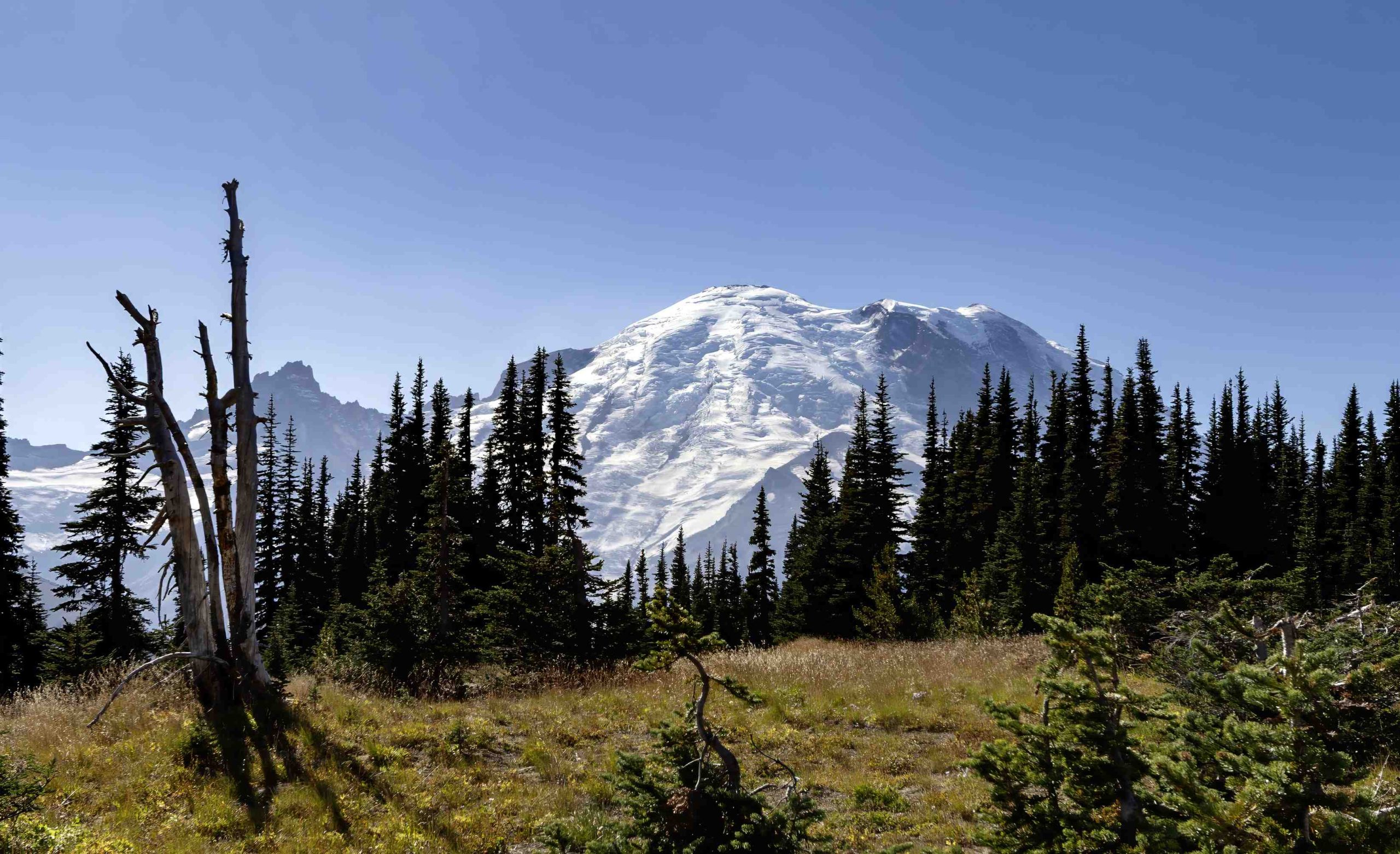Mount Rainier, an iconic stratovolcano in Washington State, captivates visitors with its majestic beauty and diverse ecosystems. This guide provides essential information for those who want to learn more about Mount Rainier, including hiking trails, weather conditions, wildlife, and summit climbing details. Whether you’re planning a day hike or considering a challenging ascent to the summit, this comprehensive overview will help you prepare for an unforgettable experience in Mount Rainier National Park.
What Are the Best Hiking Trails in Mount Rainier National Park?

Mount Rainier offers a variety of hiking trails suitable for different skill levels and interests. Here are some notable trails:
- Narada Falls Trail
- Distance: 0.4 miles
- Difficulty: Easy/Moderate
- Elevation Gain: 200ft
-
Notable Features: 168ft waterfall, bathrooms, picnic tables
-
Myrtle Falls Trail
- Distance: 1 mile
- Difficulty: Easy
- Elevation Gain: 185ft
-
Notable Features: Short, mostly paved trail leading to Myrtle Falls
-
Skyline Trail
- Distance: 5.5 miles (loop)
- Difficulty: Hard
- Elevation Gain: 1700ft
-
Notable Features: Views of Mount Rainier, wildflower meadows, glaciers
-
Mount Fremont Lookout Trail
- Distance: 5.7 miles (out and back)
- Difficulty: Moderate
- Elevation Gain: 1100ft
- Notable Features: 360-degree views from a high elevation fire lookout tower
These trails offer diverse experiences, from easy walks to challenging hikes, allowing visitors to explore the park’s natural beauty and unique landscapes.
What Are the Weather Conditions Like at Mount Rainier?

Understanding Mount Rainier’s weather patterns is crucial for planning a safe and enjoyable visit. The park experiences distinct seasonal changes:
Spring (March to May)
- Average temperatures: 40°F to 60°F
- Moderate precipitation: 4-6 inches per month
- Trails may be muddy and snowy at higher elevations
Summer (June to August)
- Average temperatures: 60°F to 80°F
- Lower precipitation: 2-4 inches per month
- Best time for hiking due to clear skies and warmer temperatures
Autumn (September to November)
- Average temperatures: 40°F to 60°F
- Increased precipitation: 4-6 inches per month
- Trails can be wet and slippery, potential snow at higher elevations
Winter (December to February)
- Average temperatures: 20°F to 40°F
- High precipitation with significant snowfall
- Many trails inaccessible due to heavy snow and ice
Visitors should always check current weather conditions and forecasts before embarking on any outdoor activities in the park.
What Wildlife Can Be Seen at Mount Rainier?
Mount Rainier National Park is home to diverse wildlife. Here’s a table of common species and where they can be spotted:
| Species | Common Locations | Best Time to Spot |
|---|---|---|
| Elk | Paradise and Sunrise areas | Fall (rutting season) |
| Black Bears | Throughout the park, forested areas | Summer and early fall |
| Mountain Goats | Higher elevations, Skyline Trail | Summer |
| Marmots | Alpine regions, Alta Vista Trail | Summer |
| Pikas | Rocky, high-elevation areas | Summer |
When observing wildlife, remember to:
– Keep a safe distance (at least 100 yards for bears and mountain goats)
– Store food and trash properly
– Make noise while hiking to avoid surprising animals
What Do I Need to Know About Climbing Mount Rainier’s Summit?
For those seeking the ultimate challenge, climbing Mount Rainier’s summit requires careful planning and preparation:
Climbing Route
The most popular route is the Disappointment Cleaver Route, starting from Paradise Visitor Center and ascending to Camp Muir before reaching the summit.
Required Permits
A Climbing Permit is mandatory for all summit attempts, obtainable through the Mount Rainier National Park website.
Average Ascent Times
- Total climb: 2-3 days
- Camp Muir to summit: 6-8 hours
Necessary Gear
- Crampons and ice axes
- Harness and rope
- Avalanche transceiver and probe
- First aid kit
- Weather-resistant clothing and layers
- Headlamp and extra batteries
Safety Considerations
- Be prepared for rapid weather changes
- Assess avalanche conditions and carry appropriate safety gear
- Be aware of altitude sickness risks
- Know how to perform crevasse rescue
- Consider hiring a guide or ensure extensive climbing experience
How Can I Make the Most of My Visit to Mount Rainier?
To fully appreciate Mount Rainier’s beauty and diversity:
- Plan Ahead: Research trails, check weather forecasts, and obtain necessary permits.
- Stay Safe: Follow park regulations, carry essential gear, and inform others of your plans.
- Respect Nature: Practice Leave No Trace principles to preserve the park’s ecosystems.
- Explore Diverse Areas: Visit different regions of the park to experience varied landscapes and ecosystems.
- Capture Memories: Bring a camera to document your journey, but remember to enjoy the moment.
By following these tips and respecting the natural environment, visitors can create lasting memories while learning more about Mount Rainier’s unique features and ecosystems.
References
- The Ultimate Guide to Day Hikes at Mt. Rainier in 2024 – Caitlyn’s Adventures
- Hiking In Mount Rainier National Park (For First Timers) – Wheatless Wanderlust
- Best Hikes In Mt Rainier: 23 Easy, Moderate + Hard Trails – Where Are Those Morgans
- Mount Rainier National Park – National Park Service
- Climbing Mount Rainier – Mount Rainier National Park
